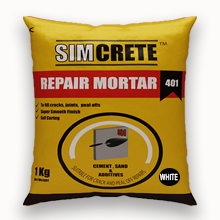Repairing of plaster walls is needed from time to time as the building ages. The most common problem with plaster walls is crumbling, water damage, cracking or pulling away from the lath behind it. The repairing process of plaster walls is presented in the following sections.

1. Identify Plaster Wall Problems
The type of damage shall be ascertained prior to the commencement of repairing operation. By doing this, the most suitable technique and equipment can be employed to repair the damage and therefore achieve the desired result.
Table 1 Common plaster wall problems and their causes
| Types of plaster wall problems | Cause of the plaster wall problems |
| Cracks | Hairline cracks caused due to moisture evaporation, delaminating crack due to plaster pulling away from the lath behind it, and settlement cracks due to building structure settlement. |
| Damage | Voids and chipping caused due to the impact when furniture is moved around the house |
| Blistering | Slaking of lime particles present in the plaster |
| Flaking | Poor bonding |
| Discolouration | Water seepage |
2. Cutting of Old Plaster
The patch of plaster, where the wall has cracked will normally sound hollow when gently tapped on the surface. This needs to be chipped and removed first.
The patch has to be cut out in a square or rectangular shape around the crack or void where repairing is needed. The edges of the chiped area need to be slanted to form an undercut to provide a neat joint.
3. Preparation of Surface
The masonry joints which become exposed after removal of old plaster are raked out to a minimum depth of 10 mm in the case of brickwork, and 20 mm in the case of stonework.
The raking is carried out uniformly with a raking tool, and loose mortar is dusted off. The surface is then thoroughly washed with water to moisten the surface to enable good adhesion of the repair mortar.
In the case of concrete surfaces, the old plaster has to be thoroughly scrubbed with a wire brush after the plaster had been cut out, and the area needs to be pockmarked to roughen by a wire brush. The dust and lose particles need to be cleaned off. The surface is washed and cleaned and needs to be kept moistened for repair.
4. Application of Plaster
REPAIR MORTAR can be applied to the surface and finished to match with the surrounding old plaster.
5. Curing of Plaster
Curing the repaired area is not required as the REPAIR MORTAR is self curing.
6. Finishing of Plaster
After the repaired area is cured and has dried, the surface is finished and painted with the colour to match the surrounding area.

